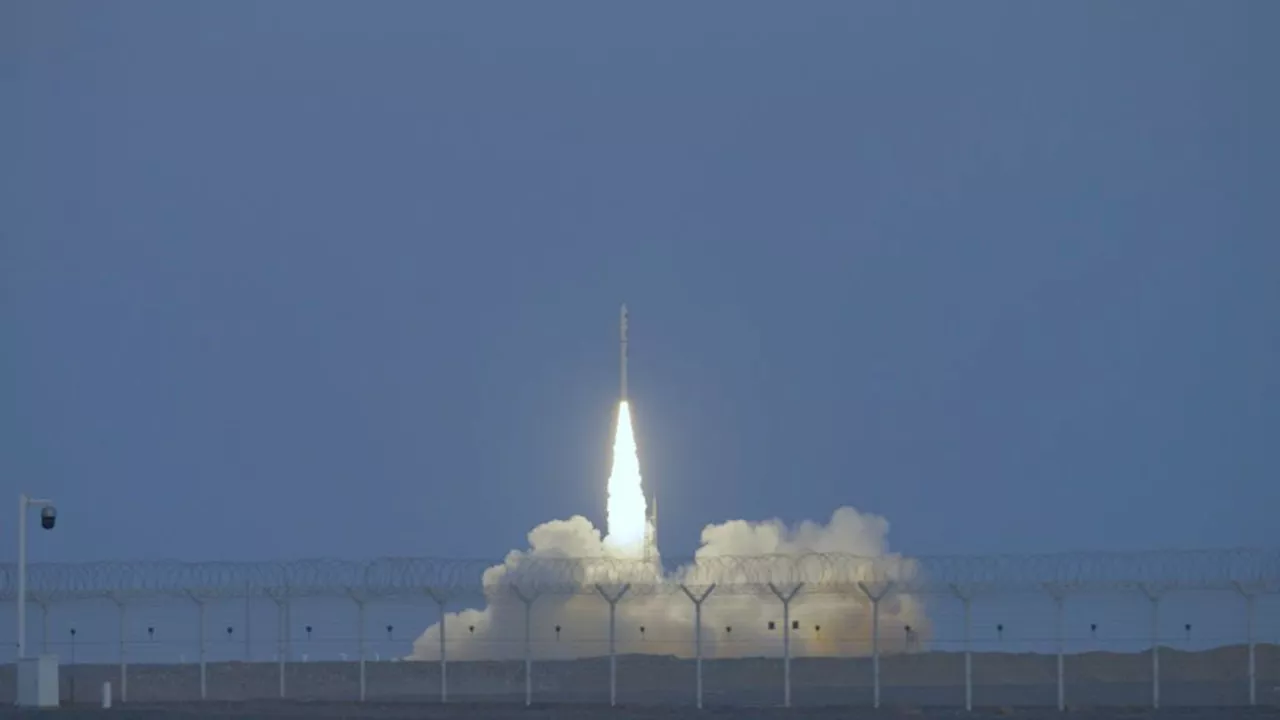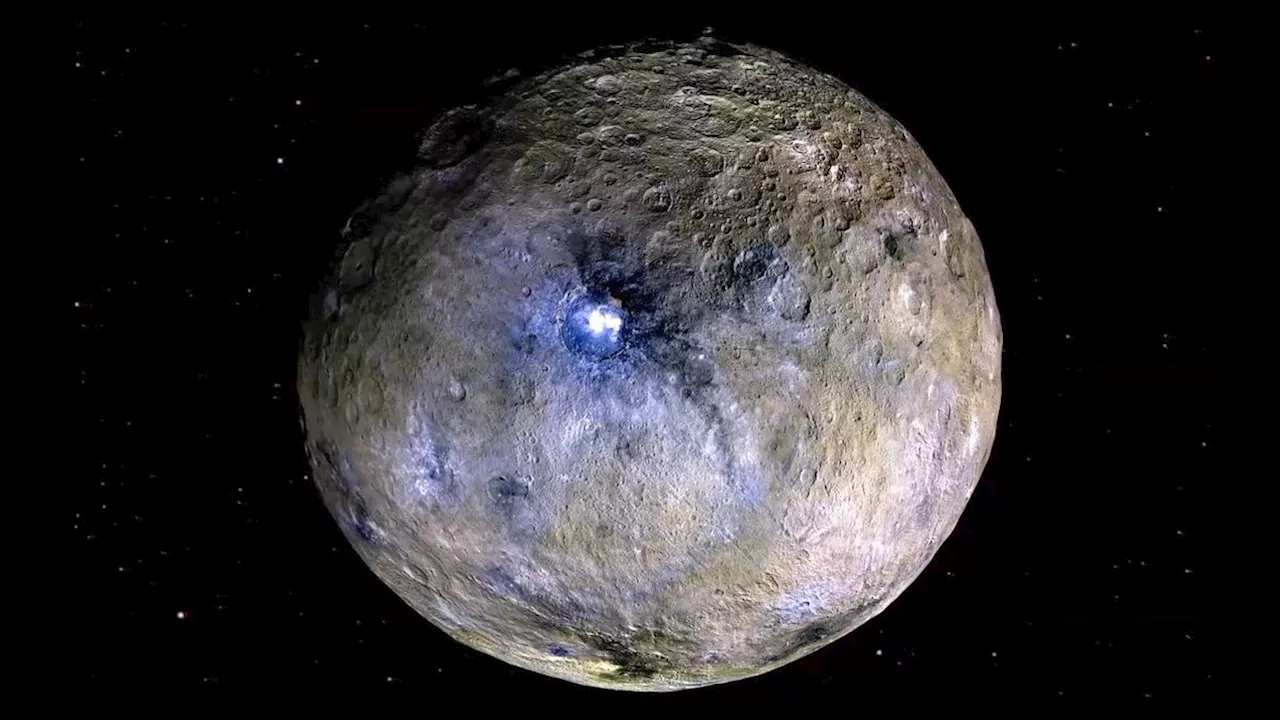Using AI to reanalyze data from NASA's Dawn mission, scientists have found that organic molecules on Ceres, a dwarf planet in the asteroid belt, likely originated from asteroid impacts rather than from within the dwarf planet itself.
Using AI to comb through data gathered by NASA's Dawn spacecraft, scientists have conducted a detailed scan of the dwarf planet Ceres to map regions rich in organic molecules . Their goal is to determine whether these 'building blocks of life' originated from within the planet or were delivered by external sources. Ceres , once classified as an asteroid, is now known to be a cryovolcanic world where ice and other volatile substances are expelled by its volcanoes.
Initial research suggested that the organic molecules on Ceres were generated and transported from its interior. However, this new AI-powered study suggests a different explanation. 'Of course, the first assumption that Ceres' unique cryovolcanism has transported the organic material from the interior of the body to the surface,' said Andreas Nathues from the Max Planck Institute for Solar System Research (MPS) in Germany. NASA's Dawn spacecraft arrived at Ceres in March 2015 and orbited the dwarf planet for about three and a half years. During this time, the spacecraft's scientific camera and onboard spectrometer identified potential patches of organic material by observing that the amount of light reflected from certain areas on Ceres' surface was higher in longer wavelengths. Organic materials, especially those with complex molecules like hydrocarbons, often reflect more light from longer wavelengths due to their molecular structure, which influences how they absorb and scatter light. Based on their initial analysis, researchers believed that the deposits they identified could contain organic compounds with a chain-like structure, known as aliphatic hydrocarbons. However, their remote data couldn't pinpoint the exact types of molecules with any certainty.Now, using AI, scientists have reanalyzed the entire surface of Ceres. While previous studies identified organic compounds in specific regions, AI allowed for a systematic examination of Dawn's full dataset, uncovering patterns that had previously been overlooked. By cross-referencing spectral data with geological features, AI helped the team confirm that organic materials were not associated with cryovolcanic activity. 'Sites of such organic molecules are actually rare on Ceres, and devoid of any cryovolcanic signatures,' commented one of the study's scientists, Ranjan Sarkar from MPS, in a statement. These findings help rule out the possibility that the organic molecules originated from Ceres' interior. Conversely, where organic compounds were reliably detected, there were no signs of deep or surface activity. 'At none of the deposits do we find evidence of current or past volcanic or tectonic activity: no trenches, canyons, volcanic domes or vents. Furthermore, there are no deep impact craters nearby,' said Martin Hoffmann, also from MPS. The vast majority of deposits were located along Ceres' large Ernutet crater in its northern hemisphere. Only three are located at a greater distance from it. Two patches were not previously known. 'Unfortunately, Dawn can't detect all types of organic compounds,' said Nathues. 'However, the organic deposits that have been reliably detected with Dawn so far likely do not originate from Ceres itself.' One plausible explanation researchers propose is that organic material was delivered to Ceres by the impact of one or more asteroids. A theory supported by computer simulations. These simulations show that such asteroids frequently collide with Ceres, but because they originate from the same general region, their relative velocities are low. As a result, the impacts generate little heat, allowing organic compounds to survive without being destroyed. This is significant, as it suggests that organic molecules could have been present on asteroids and comets in the outer solar system early in its formation and may have only reached the inner solar system much later, potentially playing a key role in the development of life here on Earth.
CERES Organic Molecules Asteroid Impacts NASA Dawn AI Analysis Astrobiology
United States Latest News, United States Headlines
Similar News:You can also read news stories similar to this one that we have collected from other news sources.
 Shiba Inu (SHIB) May Have Found a Bottom: Technical Analysis Suggests Growth PotentialThe Shiba Inu token is showing signs of stabilization after recent market volatility. Technical indicators and price action suggest a potential bottom formation, with projections for future growth.
Shiba Inu (SHIB) May Have Found a Bottom: Technical Analysis Suggests Growth PotentialThe Shiba Inu token is showing signs of stabilization after recent market volatility. Technical indicators and price action suggest a potential bottom formation, with projections for future growth.
Read more »
 Dwarf planet Ceres: Building blocks of life delivered from spaceThe dwarf planet is a bizarre, cryovolcanic world. However, the organic deposits discovered on its surface so far are unlikely to originate from its interior. The organic material found in a few areas on the surface of dwarf planet Ceres is probably of exogenic origin. Impacting asteroids from the outer asteroid belt may have brought it with them.
Dwarf planet Ceres: Building blocks of life delivered from spaceThe dwarf planet is a bizarre, cryovolcanic world. However, the organic deposits discovered on its surface so far are unlikely to originate from its interior. The organic material found in a few areas on the surface of dwarf planet Ceres is probably of exogenic origin. Impacting asteroids from the outer asteroid belt may have brought it with them.
Read more »
 Chinese commercial Ceres-1 rocket launches 5 weather satellites to orbit (video)Andrew is a freelance space journalist with a focus on reporting on China's rapidly growing space sector. He began writing for Space.com in 2019 and writes for SpaceNews, IEEE Spectrum, National Geographic, Sky & Telescope, New Scientist and others.
Chinese commercial Ceres-1 rocket launches 5 weather satellites to orbit (video)Andrew is a freelance space journalist with a focus on reporting on China's rapidly growing space sector. He began writing for Space.com in 2019 and writes for SpaceNews, IEEE Spectrum, National Geographic, Sky & Telescope, New Scientist and others.
Read more »
 Treveri Cellars: A Commitment to Organic Practices and High-Quality Sparkling WinesTreveri Cellars, a Washington state winery, discusses its focus on organic farming and sustainable practices. The winery, owned by the Grieb family, produces a wide array of sparkling wines, including unique varietals.
Treveri Cellars: A Commitment to Organic Practices and High-Quality Sparkling WinesTreveri Cellars, a Washington state winery, discusses its focus on organic farming and sustainable practices. The winery, owned by the Grieb family, produces a wide array of sparkling wines, including unique varietals.
Read more »
Organic Molecules Found in Comets and AsteroidsThe discovery of organic molecules in comets and asteroids by missions like Rosetta, Hayabusa2, and Osiris-Rex provides insights into the building blocks of life in the solar system.
Read more »
 CROSSING SOUTH: Organic Farming & Green IdeasThursday, Jan. 2, 2025 at 9:30 p.m. on KPBS TV / Stream now with the PBS app + Encore Saturday, Jan. 4 at 3:30 p.m. on KPBS and Monday, Jan. 6 at 9:30 p.m. on KPBS 2. Today we meet possibly the most interesting man in the world, Canon, and his operation is called 'Mud and Lotus.
CROSSING SOUTH: Organic Farming & Green IdeasThursday, Jan. 2, 2025 at 9:30 p.m. on KPBS TV / Stream now with the PBS app + Encore Saturday, Jan. 4 at 3:30 p.m. on KPBS and Monday, Jan. 6 at 9:30 p.m. on KPBS 2. Today we meet possibly the most interesting man in the world, Canon, and his operation is called 'Mud and Lotus.
Read more »
